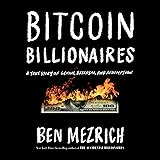Why Is Bitcoin Going Down? Understanding the Latest Crypto Market Downturn
The cryptocurrency market recently saw a significant dip. Bitcoin prices fell. Many investors feel confused and concerned. What caused this sudden shift? As discussed in the video above, complex economic forces are at play. This isn’t just about crypto; it’s about global finance. Let’s explore the key factors behind this latest market movement.
The US Dollar’s Struggle: A Core Reason for Bitcoin’s Fall
The health of the US dollar impacts many markets. Lately, the dollar faces severe challenges. Economic policies over the last nine months have been problematic. These policies have weakened the dollar significantly.
The US dollar has lost value. Since the start of this year, its value dropped by 15% to 20%. This erosion is substantial. It stems from huge economic policy changes. Such declines signal broader economic instability.
Dedollarization: A Growing Global Trend
An alarming trend affects the US dollar. Many countries are now dedollarizing. They are moving away from the US dollar. This includes divesting from US Treasury bills and bonds. Basically, they reduce reliance on anything tied to the US economy.
This shift is not minor. It’s a fundamental change in global finance. Countries seek alternatives. Their actions put more pressure on the US economy. A faltering US economy affects everything.
Federal Reserve Decisions and Global Interest Rates
Interest rate decisions always make headlines. The Federal Reserve’s actions are crucial. Earlier this year, three to four interest rate cuts were expected. Major banks like Deutsche Bank and JP Morgan anticipated these cuts. This would have made borrowing cheaper. Lower rates often stimulate economic activity.
The Reality of Rate Cuts
The Fed did lower rates recently. It was a quarter-point cut. This news typically boosts markets. However, other global banks acted differently. The Bank of China kept its rates unchanged. Japan did the same. This divergence created market uncertainty.
Japan’s role is particularly interesting. For decades, it offered “free money.” Companies borrowed there cheaply. When Japan slightly raised rates last year, markets reacted negatively. This shows market addiction to low-cost debt. Unchanged rates can also cause drops. Investors want that “free money.” When it’s not expanding, they pull back.
The Job Market: A Different Story Than Reported
Job reports provide economic insights. Historically, 200,000 to 500,000 new jobs were common. Recent numbers are starkly different. We now see roughly 20,000 jobs created. This is a significant drop.
Even these numbers need scrutiny. Companies sometimes inflate hiring projections. They might announce 15 openings. They then hire only one person. This tactic creates an illusion of growth. It falsely boosts job creation figures. Many times, they also replace existing staff with lower-paid workers. This strategy further skews the data. It indicates a weaker job market than official reports suggest.
Inflation and Its Broad Reach
Inflation is a persistent problem. It doesn’t just come from interest rate changes. Banks create money. Mortgages add to this money supply. These actions fuel inflation. Prices rise for consumers.
Everything becomes more expensive. Grocery prices increase. Land fees go up. Property taxes rise. The cost of cars and rent escalate. Meanwhile, companies are not hiring. Many are actually letting people go. This creates a difficult economic environment. People look for ways to protect their wealth.
Cryptocurrency’s Unexpected Correlation with Traditional Markets
Bitcoin was born from financial crisis. Its original purpose was decentralization. It offered an alternative to traditional finance. The 2008-2009 crash highlighted system flaws. Bitcoin promised independence from Wall Street.
However, this narrative has shifted. In recent years, crypto has intertwined with traditional markets. Wall Street players now dominate the space. Institutional money flows in. This integration changes Bitcoin’s dynamics. When the stock market struggles, crypto often follows.
The Stock Market’s Influence on Crypto
Stock futures haven’t performed well. This directly impacts crypto. Investors view Bitcoin differently now. It’s no longer just a hedge against economic downturns. It behaves more like a tech stock. Its correlation with the S&P 500 has grown. This is a relatively new phenomenon. It challenges Bitcoin’s original ethos. When traditional financial giants falter, they drag crypto down too.
Future Outlook: A Glimmer of Hope for Crypto?
Despite recent drops, optimism persists. Many analysts remain bullish on crypto. Figures like Michael Saylor continue to advocate for Bitcoin. They see dips as buying opportunities. They predict future price increases. This sentiment suggests potential long-term growth.
ETFs and Regulatory Clarity
Regulatory developments are also crucial. The SEC’s role in approving ETFs is significant. We are currently in a key window. September and October are vital months. Many ETF applications are awaiting approval or denial. These approvals could bring more institutional money. They could also boost mainstream adoption. This regulatory clarity is positive news for the crypto space.
However, the irony remains. Bitcoin was created to escape Wall Street. Now, Wall Street’s involvement is key. Their participation brings both capital and volatility. The outcome of this integration is still unfolding. More job data and Fed announcements are expected. Banks predict further rate cuts next year. This could eventually benefit asset holders. The journey for the Bitcoin and wider crypto market remains interesting.







